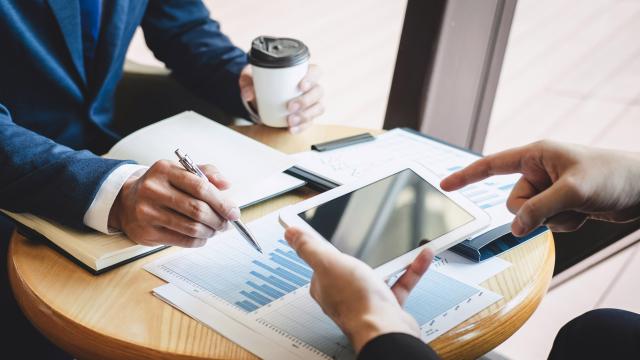
(Source: Shutterstock)
Longstanding norms and practices in midstream borrowing are changing and legacy midstream companies have an opportunity to capitalize on new terms being dictated by private-equity firms, which are increasingly common acquirers in the midstream sector. Many of these acquisitions are funded, at least in part, by secured, syndicated loans.
Acquisition financing has been utilized in the midstream space for decades. However, up until very recently, the lender’s agreement to provide the financing was frequently on a best-efforts basis.
Even in a committed financing, the lender’s obligation to fund may be subject to extensive conditions, including diligence and an agreed amount of syndication of the loan. The conditions created risk that the loan would not be available to the borrower/purchaser at the time of closing.
With the advent of numerous oil-and-gas- or infrastructure-focused private-equity funds, sponsors and borrowers are now applying “fully committed” and “limited conditionality” principles that have been employed in other industries to debt-financed midstream acquisitions.
Moreover, the entire approach of obtaining and negotiating syndicated loans for acquisition financing is changing to incorporate borrower-friendly practices and deal terms not previously pervasive in the midstream-financing area.
What It Is
Although the term “acquisition financing” is broad, what is meant in this article is the use of a loan to fund a portion of price of purchasing a target company or assets.
In most cases in the midstream area, the target will immediately grant liens and guarantee the loan. So the target is responsible for most, if not all, of the credit support for the loan.
The loan will be funded substantially concurrent with the closing of the acquisition and the proceeds of the loan are paid to the seller as a portion of the purchase price. If the acquisition is not consummated or the commitment was negotiated in connection with a bid that is ultimately not accepted, the loan is never funded and the parties simply walk away.
The commitment letter for the acquisition-financing loan is typically signed concurrently or prior to the signing of the binding acquisition agreement. If the acquisition agreement has a condition to the purchaser’s obligation to close that requires obtaining financing—referred to as a “financing out”—then the binding nature of the debt commitment letter is not a significant concern.
Historically, in the midstream area, many purchasers were able to negotiate a financing-out. Even when not, purchasers were comfortable that a lender’s “commitment” was sufficient to rely upon in entering the binding purchase agreement, even if subject to diligence and significant uncertainty as to loan-agreement terms.
In other cases, purchasers may have felt there were other mitigating factors that made it acceptable to assume any risk of the loan falling through, such as funding the purchase price with equity or cash on hand and obtaining a loan later—or the break fee was an acceptable risk to assume.
New Entrants
With the increased number of energy or infrastructure funds managed by conventional private-equity firms, the market for acquisition financing in the midstream area has seen a shift in practices and in terms of loan agreements.
Many private-equity firms managing the newly formed energy or infrastructure funds have decades of experience dealing with leveraged buyouts in other markets and expect the borrower-friendly terms and practices that are common in such markets.
Over time, lenders in these other markets have realized that there is competition to make any acquisition financing. And they have become accustomed to private-equity firms knowing and dictating the best terms they can get that can still be syndicated.
Additionally, these private-equity firms recognize the importance of certainty that the funds will be available once the conditions to closing the acquisition are satisfied.
One of the main characteristics that distinguish this process is the negotiation of commitment papers with multiple potential lenders at the same time. Thus, the sponsor’s counsel drafts the term sheet and distributes it to multiple banks simultaneously for each to react and incorporate their terms.
In many cases, all the lenders will be represented by a single law firm that segregates representation of each lender. This allows a more efficient diligence process: The diligence may be done just once for all lenders. And it effectively shares the legal costs by reimbursing all expenses at closing of the winning loan facility.
Implications
Many term sheets in midstream-acquisition financing have left much to be agreed in good-faith negotiations of the ultimate loan documents, which would occur after signing the acquisition agreement and prior to closing. The new trend is moving towards much longer and greater-detailed term sheets, spanning 75 or more pages.
The point of this level of specificity is twofold. First, it eliminates, or at least greatly narrows, any points that the lenders could say they cannot concede, thus an impasse in acquisition funding.
Secondly, it allows negotiation of as many terms as possible while the borrower still has greater negotiating leverage—due to that prospective lenders know other lenders are still “bidding” to lead the loan.
Many of the private-equity firms now obtaining midstream-acquisition financings have experience with the real risks and consequences of getting caught between a recalcitrant lender and a binding obligation to consummate an acquisition.
They are also well aware that a bid that does not include a financing-out is seen by a seller as more attractive. As such, there is a much greater emphasis on certainty of funding.
The effort to increase certainty takes the form of “certain funds” provisions. These eliminate or greatly narrow any gap between conditions in the binding acquisition agreement being met—and the purchaser having an obligation to close—and the lender’s obligation to fund the loan.
Additionally, the conditions to funding the loan would not include any satisfactory diligence on behalf of the lenders that, in many cases, requires the lenders get satisfied with the state of diligence or the adequacy of indemnities in the purchase agreement prior to signing the acquisition agreement.
Also, the conditions to loan-funding would not tie other funding conditions to the acquisition-closing conditions. And they would not limit the representations that must be made by the borrower to the most fundamental representations—e.g., due authority and power to execute the documents, no conflict with laws, etc.
In addition to reducing conditionality, borrowers are now negotiating much more flexibility in how to run their business, overcoming lenders’ desire to contain their collateral and restrict risky actions by the borrower.
This is due, at least in part, to the fact that private-equity firms are accustomed to drafting acquisition-financing commitment papers and sending the papers to potential lenders to react—as opposed to the traditional rule that lenders control the drafting.
This has two systemic benefits. First, it creates a negotiation environment wherein the borrower has “home field” advantage and has already drafted the preferred flexibility. Secondly, it not-too-subtly informs the lenders that there is competition for the lead-agent role—and for the underwriting compensation.
The flexibility that is now becoming more common includes the concept of an unrestricted subsidiary—that is, subsidiaries that are not part of the loan collateral and not subject to the loan’s restrictions.
Loan agreements will permit some amount of investments in unrestricted subsidiaries as well as some amount of dividends to the owners of the borrower. Both would traditionally be severely limited or outright prohibited.
This designation creates great optionality for businesses to pursue joint ventures and riskier ventures or to otherwise develop value outside the collateral for the loan.
Additionally, the financial model is moving beyond a simple definition of EBITDA in accordance with generally accepted accounting principles (GAAP) to now include dozens of add-backs that are negotiated and frequently have nothing to do with GAAP, such as projected synergies and savings in run-rate costs.
In addition to creating greater potential leverage capacity by increasing the calculated EBITDA, many loan agreements now have “grower” baskets—that is, exceptions to the loan document’s restriction on such actions—for debt, liens, investments and dividends, which are defined as the greater of a fixed dollar amount and a percentage of EBITDA.
Thus, the add-backs to EBITDA have a domino effect of increasing flexibility in each such basket.
Borrower-friendly
The negotiation practices and strategies in sponsored acquisition-financing are now creating prevalent borrower-friendly terms throughout the midstream-lending market. One example is EBITDA add-backs specific to the midstream industry, such as exclusion of line-fill adjustments or overwriting GAAP’s treatment of certain minimum volume commitments.
Additionally, borrowers are becoming more wary of mortgage, title and reporting requirements.
Many midstream loan agreements were initially drafted from the perspective of either an upstream loan or a project-finance loan. In either case, lenders expected continuous title reporting and near-total mortgage coverage.
However, the development of gathering systems is not always achieved in large chunks. Frequently, it is the accumulation of rights of way and easements over time and as needed.
As such, a loan agreement that requires perpetual total mortgage coverage is essentially a loan agreement in which the borrower is constantly in breach. Borrowers have been successful in softening the language to only require compliance annually or quarterly and the coverage requirement is almost never complete coverage.
Another major point for many midstream borrowers is the flexibility to fund joint ventures and have the EBITDA count to the loan group’s calculation—thereby helping the financial covenant compliance of the borrower—while avoiding granting their lender any liens on the joint venture entity itself.
Lenders have taken varying approaches on the permitted size and conditions to allowing this flexibility. But, in the end, most lenders agree to some amount of accommodation on this front, which obviates the need for a future waiver—and the fee associated therewith—at the time of creating or entering the joint venture.
One might expect that this greater flexibility comes at a cost. But the underwriting and upfront fees associated with these deals have largely stayed steady.
Of course, a fully committed loan will have a higher underwriting fee than a best-efforts engagement. But the price of prior, loosely committed financings was approximately the same as the price for completely committed, certain-funds facilities with much greater borrower-negotiated covenant exceptions.
Further Implications
These trends are certainly benefiting private-equity-sponsored buyers. However, the developments have also had further effects on the market as a whole.
Other borrowers are now able to negotiate more flexibility, more EBITDA add-backs and looser mortgage requirements because lenders now know that those provisions will preclude a successful syndication of the loan.
Additionally, by running each potential loan with a group of banks, banks are now seeing detailed negotiations on a greater number of deals. As such, the market is more efficient because lenders have more data points and know what other lenders may accept—either as lead or as a participant in a syndicated loan.
Thus, the gap has shrunk between the best deal that a borrower may achieve and what is truly important to lenders participating in the midstream financing market.
While acquisition financing has existed for decades, private-equity firms’ search for returns, coupled with a growing midstream market, has resulted in the advent of strategies and practices in midstream acquisition financing that have been honed over years of high-volume leveraged buyouts in other industries.
These factors are creating more efficient markets and greater borrower flexibility, while reducing funding risks associated with funding at closing of acquisitions. The result is improved predictability for midstream companies—whether buyer or seller.
Daniel Allison is counsel in the Houston office of Sidley Austin LLP, focusing on commercial lending and other complex commercial-finance and energy transactions.
Recommended Reading
CERAWeek: Energy Secretary Defends LNG Pause Amid Industry Outcry
2024-03-18 - U.S. Energy Secretary Jennifer Granholm said she expects the review of LNG exports to be in the “rearview mirror” by next year.
GOP’s Reaction to White House LNG Pause Takes Shape
2024-01-31 - The U.S. House Energy, Climate and Grid Security subcommittee set the date for a hearing on the Biden administration’s recent pause on LNG export approvals for Feb. 6; Republican Louisiana Sen. John Kennedy pledges to block Biden nominees.
Belcher: Election Year LNG ‘Pause’ Will Have Huge Negative Impacts
2024-03-01 - The Biden administration’s decision to pause permitting of LNG projects has damaged the U.S.’ reputation in ways impossible to calculate.
Hirs: LNG Plan is a Global Fail
2024-03-13 - Only by expanding U.S. LNG output can we provide the certainty that customers require to build new gas power plants, says Ed Hirs.
Global Energy Watch: Corpus Christi Earns Designation as America's Top Energy Port
2024-02-06 - The Port of Corpus Christi began operations in 1926. Strategically located near major Texas oil and gas production, the port is now the U.S.’ largest energy export gateway, with the Permian Basin in particular a key beneficiary.





